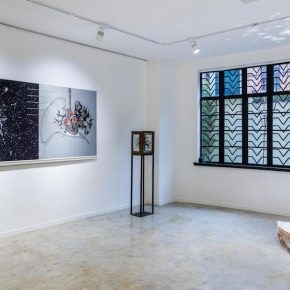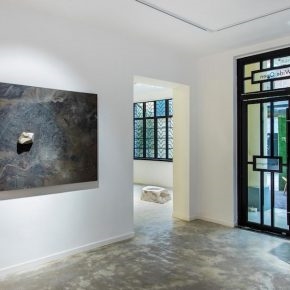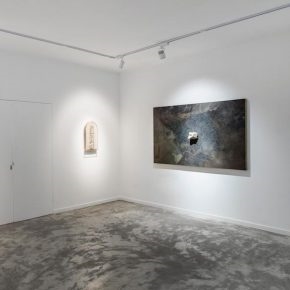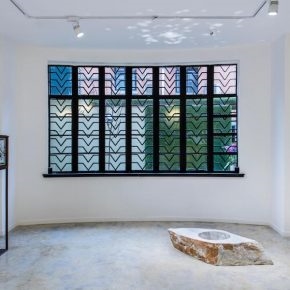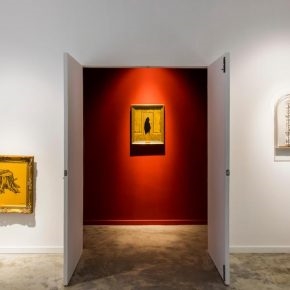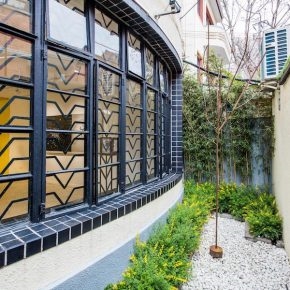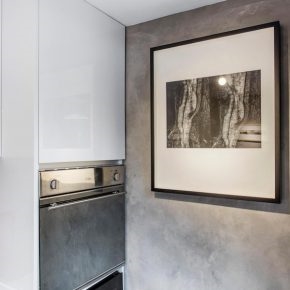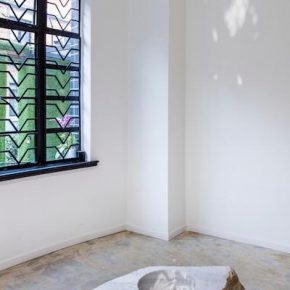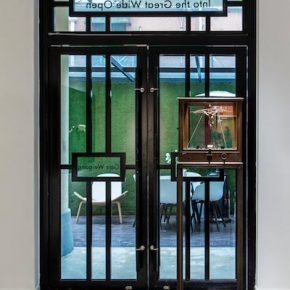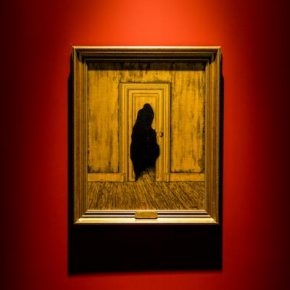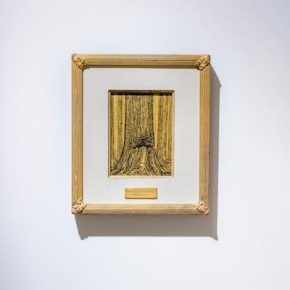
In “Into the Great Wide Open” the late Tom Petty describes a hegemon in the fog of post war hubris as “a rebel without a clue”. Far better attuned than Petty’s erstwhile hegemon to the reality that one woman’s illusion is another’s truth Gao Weigang and Ni Youyu touch upon themes of nature and her fractious relationship with mankind and then dangle the offer of an exit into the wide-open universe (real and illusory) both internal and external to ourselves.
The exhibition explores dualities such as myth and religion; representation and illusion; and the living and the inanimate and the shifting conflict and coalescence between them. It is a lively combination and conversation among works that are very different from each other and yet share certain affinities, characteristics and conditions. Through this ongoing exchange the artists offer a glimpse into the prison perception and its various escape routes.
Throughout his career, Gao Weigang has employed various materials and scales, and he has traversed from the three-dimensional to two and back. But his fundamental interests remain constant, as his collection of works in this exhibition demonstrates to majestic effect. For the artist, there is great potential in works achieving a sort of oscillation between perception and representation, as shapers of experience arise in the nature of the spectator.
In the exhibition, Gao alludes to the concept of mimesis, understood as an imitative representation of reality, and walks the line between austerity and farce in simulacra of the natural through issues of public conformity, representational nature and its identities. While encompassing strategies to cross the threshold between the visible and the invisible, the artist has produced an outdoor sculptural installation, heart-shaped candles and a mural intervention that resembles a pictorial deconstruction of a familiar image of the spaceman.
The function and strength of Gao’s paintings depend on the viewer making both subtle and explicit connections of an imagined world that is long on atmosphere with recurring obvious particulars such as the physical elements he adds to his canvases, most often, rocks. Exemplified in series such as Echo and the Struggler and the painting Jerusalem, the artist begins to address contested sites and subjects through known locations and places while encompassing the traces of humanity and nature. Thus, the paintings – most of which still feature an uncanny intensity of voided visage – reveal the cultural layer of places.
The span of Ni Youyu’s artistic practice – which deploys everything from art and ideas of collage to a heightened methodology between labor and painterliness, as well as draws attention to the formal qualities of the natural system, particularly, zooming into the galaxy – draws heavily upon the exploration of subject and medium, often in relation to perceiving nature imbued with time and space.
A taxonomic collector of characteristic things such as those found in nature and assortments of artifacts, Ni reconstructs everyday objects into his own cosmological worldview. Whether created within old wooden pinball machines, where raw materials are turned and twisted into varied configurations, or his photographic collages involving past cut-out pictures arranged into carefully sequential impressions, these works seem to create a cumulative insight and flow of their own. There are also revisits of art historical references by the artist. Ni produces golden paintings of trees in their natural habitats with a few works appropriated as optical homages to Belgian surrealist Rene Magritte. The dreamlike works’ tricky play of flatness and depth is a reminder of the fallibility of perception. More than mirrors held up to our own world or windows into other galaxies, Floating Wood 2, which depicts a wrinkled log floating in space alongside the arterial system of the heart, is a form of mediated construction itself. It is a unified pictorial that alludes to reaching out with the experience of being alive in our modern world and, perhaps, also beyond our constellation.
Land, sea and sky are recurring motifs in the artists’ works. With no prescribed route in the exhibition, sculptures and installations as site-specific facades, paintings with their differences and familiarities in kind and rhythm, and the artworks encompassing their respective displacements and disguises, the mounting and viewing experience is a rich accumulation of associative reference, becoming a kind of lexicon of cultural materiality, identity and experience, which plots out a vivid landscape. Faced with this vision of a garish, hyperventilating, late-capitalist culture in the current societies of today, we are forced to consider how it forms us – our histories, our environment, our identities, our governances and our interactions. Though the same questions come up again and again, this exhibition switches you on and brings you right into a continuous present, as this generous and definitive show makes clear.
About the Artists
Gao Weigang employs a wide range of media and materials in his practice, reflecting his intention of challenging mainstream visual culture through questioning the apparatus of common knowledge and perception. Born in Heilongjiang province, China in 1976, Gao graduated from the Tianjin Academy of Fine Arts, where he majored in oil painting. He currently lives and works in Beijing. His works have been widely exhibited across Mainland China, as well as in Hong Kong, Singapore, London, and New York City, and have been collected by many art institutions/foundations with worldwide reputation such as The Burger Collection, Hong Kong; DSL Collection, Paris, France; Long Museum, Shanghai, China; White Rabbit Collection, Sydney, Australia; Yuz Museum, Jakarta, Indonesia; and Louis Vuitton Group, Hong Kong, among others. He lives and works in Beijing.
Ni Youyu has used a range of materials, including wooden boxes, ceramics, and paint, and produced installations exploring the interrelationship between humankind, nature and the universe, which is a common theme in classical Chinese landscape painting. He graduated from the Fine Art College of Shanghai University and was named Best Young Artist in the 2014 Chinese Contemporary Art Awards. He is interested in the materiality of objects and the reinterpretation of traditions and conventions in art. Ni’s works have been shown at the Bern Art Museum (Switzerland, 2016), Museum of Art Lucerne (Switzerland, 2011), Gwangju Museum of Art (South Korea, 2012), Museum of Contemporary Art (Taipei, 2015), MARTa Herford (Germany, 2015), Shanghai Art Museum (2012) and Power Station of Art (Shanghai, 2015). He lives and works in Shanghai.
About the exhibition
Dates: March 23 – July 31, 2018
Venue: 166 Art Space
Courtesy of the artists and 166 Art Space.


